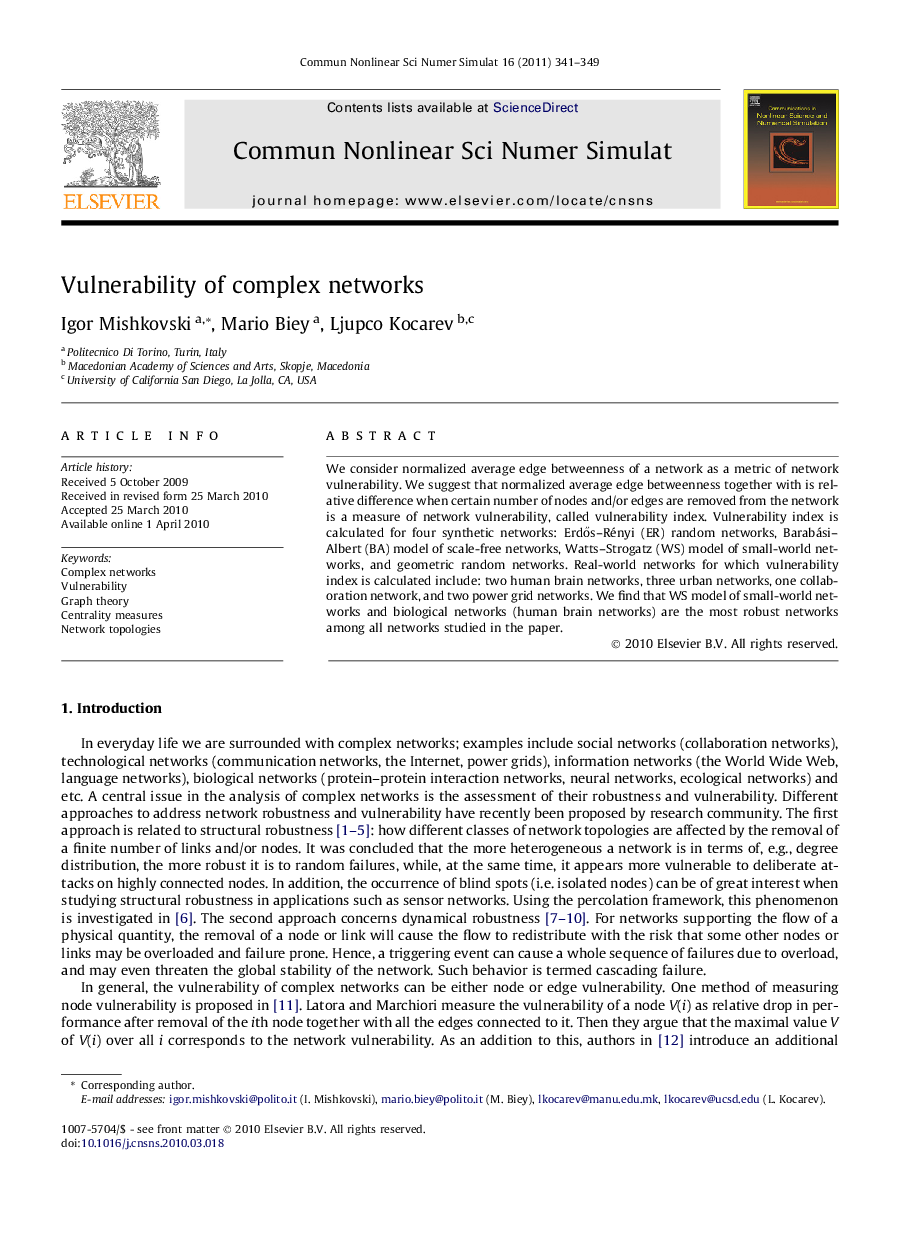| Article ID | Journal | Published Year | Pages | File Type |
|---|---|---|---|---|
| 758809 | Communications in Nonlinear Science and Numerical Simulation | 2011 | 9 Pages |
We consider normalized average edge betweenness of a network as a metric of network vulnerability. We suggest that normalized average edge betweenness together with is relative difference when certain number of nodes and/or edges are removed from the network is a measure of network vulnerability, called vulnerability index. Vulnerability index is calculated for four synthetic networks: Erdős–Rényi (ER) random networks, Barabási–Albert (BA) model of scale-free networks, Watts–Strogatz (WS) model of small-world networks, and geometric random networks. Real-world networks for which vulnerability index is calculated include: two human brain networks, three urban networks, one collaboration network, and two power grid networks. We find that WS model of small-world networks and biological networks (human brain networks) are the most robust networks among all networks studied in the paper.
